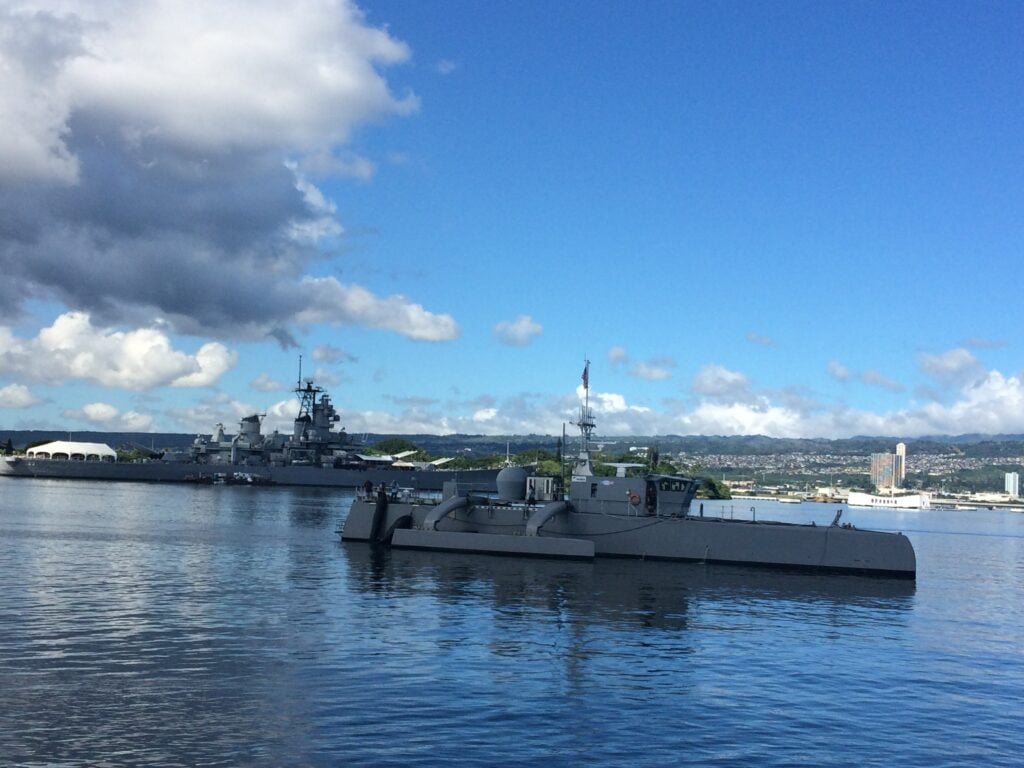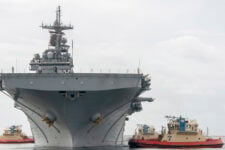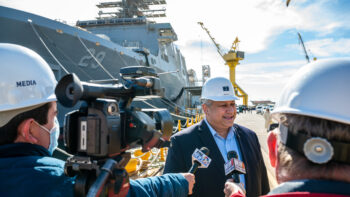
The experimental unmanned Sea Hunter is the forerunner of the Navy’s proposed fleet of robotic warships.
WASHINGTON: Despite deep and bipartisan skepticism from Capitol Hill over its plans to build three new classes of unmanned warships, the Navy went ahead today with its plans to begin building as many as 40 Medium Unmanned Surface Vessels.
The service awarded L3 Technologies Inc. a $34.9 million contract for a prototype MUSV, along with an option for up to eight additional ships. If the company builds those eight unmanned ships, the contract will be worth $281 million through June 2027.
Overall, the Navy wants to build about 40 MUSVs in coming years, which will clock in at between 45 to 190 feet long, with displacements of roughly 500 tons. The medium ships are thought to skew more toward mission modules revolving around intelligence, surveillance and reconnaissance payloads and electronic warfare systems.
In their versions of the 2021 National Defense Authorization Act, however, both the House and Senate told the Navy to slow down on its acquisition of some unmanned ships, specifically the Large Unmanned Surface Vessel. Both documents boost Congressional oversight over the LUSV, an ambitious new ship the Navy hoped to begin building in 2023.
While the MUSV will focus on gathering intelligence, the LUSV will act as a forward-deployed missile launcher, bristling with missile tubes and other weapons, Navy planners have said.
Lawmakers are looking to ensure the Navy finalizes its design and operational plans before building the larger ship, something the service has struggled with as it built other classes such as the Littoral Combat Ship, the Ford class of aircraft carriers, and the Zumwalt destroyers, all of which fell behind schedule, went over budget and struggled with new technologies.
“USVs are one of the centerpieces of distributed maritime operations,” Rear Adm. Casey Moton, head of the Unmanned and Small Combatants office, said last month at a U.S. Naval Institute event. The ships will act as platforms to enable the fleet to spread out and counter China’s ambitions in the Pacific either as a forward screen for a carrier strike group or as vessels pressed forward with an acceptable risk of attrition.
The Navy hasn’t yet fully prepared to deploy or sustain a new fleet of unmanned vessels, Capt. Pete Small, program manager for unmanned maritime systems said in May. “Our infrastructure right now is optimized around manned warships,” Small said. “We’re gonna have to shift that infrastructure for how we prepare, deploy, and transit” over large bodies of water before the navy begins churning out unmanned ships in greater numbers, he added.
Fincantieri acquires Leonardo’s undersea armaments business worth up to $447 million
Terms of the acquisition include the shipbuilder paying a fixed fee of €300 million ($323 million), and “based on certain growth assumptions,” an additional €115 ($124 million) directly relating to performance of the underwater armaments business this year.


























